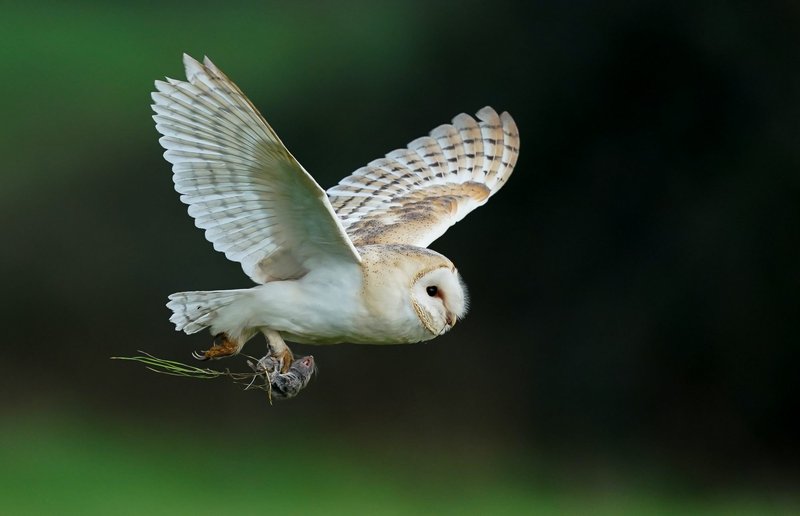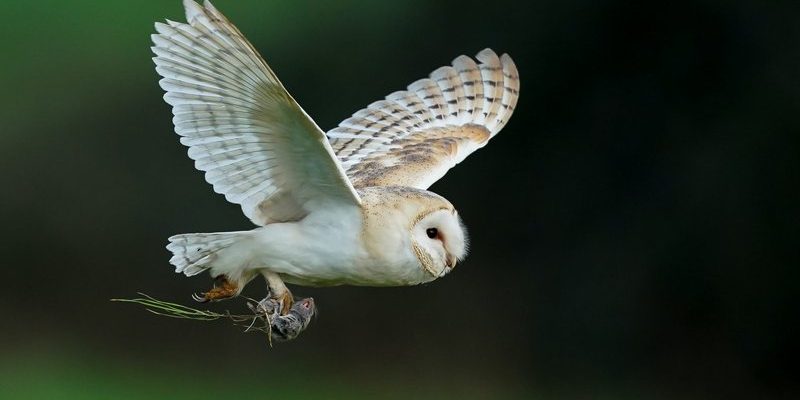
So how do these beautiful, ghost-like birds manage to live in such diverse habitats? Honestly, their adaptations are a mix of physical features and clever behaviors. From their unique hunting techniques to their exceptional sensory abilities, barn owls show us just how flexible and resilient nature can be. Let me explain how these adaptations help them thrive wherever they go.
Physical Features That Aid Survival
Barn owls are easily recognizable due to their striking heart-shaped faces and long wings. But it’s not just their looks that make them special; their physical features play a vital role in their adaptability. For example, their lightweight bodies allow for agile flight, making it easier for them to swoop down and catch prey in tight spaces. You might say they’re like the ultimate stealthy ninjas of the night!
Their feathers are another key asset. Barn owls have specially designed feathers that muffle sound, which helps them sneak up on their dinner. Think about it: when you’re trying to be quiet, even the slightest noise can give you away. These feathers allow barn owls to glide silently, an essential trait when hunting small animals like rodents or insects.
Additionally, their long legs and sharp talons are perfectly shaped for grabbing and holding onto prey. Just like a well-crafted tool, each part of their body serves a purpose, allowing them to survive in various environments—from thick forests to open fields.
Exceptional Hearing and Vision
You might be wondering how barn owls manage to find prey in the dark. The secret lies in their incredible hearing and vision. These birds have asymmetrical ears, which means one ear is higher than the other. This unique trait helps them pinpoint the location of sounds with amazing accuracy. It’s almost like having a built-in sound system that allows them to locate prey even when it’s hidden under grass or leaves.
When it comes to vision, barn owls have large eyes that possess excellent night vision. Their eyes are designed to gather as much light as possible, which is crucial for hunting after sunset. Imagine stepping out into the dark and being able to see clearly—this is exactly what barn owls experience!
Together, these senses create a powerful combination that allows barn owls to hunt effectively, even in the most challenging conditions. Just think about how it would feel to have such heightened abilities; it’s like having superpowers!
Hunting Strategies in Different Environments
Barn owls are not just passive observers of their surroundings; they’re skilled hunters that adapt their strategies based on where they live. In open fields, for example, they often use a method called “quartering.” This involves flying low and then hovering over potential hiding spots, listening and watching for any signs of movement.
In contrast, when they’re in more wooded areas, they might switch tactics. Here, they often take advantage of the dense foliage to sneak up on their prey. You can think of them as versatile chefs, switching recipes based on the ingredients available in their pantry!
This adaptability doesn’t stop at hunting tactics. Barn owls can also modify their hunting times. While they typically hunt at night, they might adjust their behavior in urban settings where light pollution alters the natural dark. This flexibility not only helps them find food but also avoid competition and threats.
Building Nests in Unique Locations
Nesting is another area where barn owls have shown incredible adaptability. Unlike many other birds, which build nests in trees or bushes, barn owls prefer to nest in cavities. You might find them in old barns, abandoned buildings, or even cliff ledges. These choices offer safety from predators and a cozy place to raise their young.
The materials they use for their nests also reflect their resourcefulness. Barn owls often utilize grass, feathers, and even bones found in their hunting grounds. Imagine sifting through a treasure trove of materials to create a comfortable home! This ability to make the best out of available resources is a testament to their survival instincts.
By nesting in these unique places, barn owls can thrive even in areas heavily populated by humans. They are living proof that, with a little creativity, you can turn challenges into opportunities.
Impact of Climate and Seasonal Changes
Barn owls are also influenced by climate and seasonal changes, and they’ve developed various strategies to cope. For instance, during colder months, their hunting behavior may shift. When prey is scarce due to harsh weather, they can adjust their diets to include different food sources. It’s like being a flexible diner who’s willing to try a new dish when their favorite item isn’t available!
During spring and summer, these owls become more active as the days grow longer, and prey becomes abundant. They might breed more frequently during these seasons, ensuring their young have the best chance of survival. By syncing their life cycles with the environment, barn owls maximize their opportunities and resilience.
It’s fascinating to see how these adaptations not only help barn owls survive but also thrive, showcasing the power of nature’s flexibility.
The Role of Habitat Preservation
As we learn about how barn owls adapt, it’s essential to address the importance of habitat preservation. Their ability to thrive in various environments doesn’t mean they are immune to the challenges posed by habitat loss and degradation. Urban development, agricultural practices, and climate change can significantly impact their populations.
Creating safe spaces for barn owls, such as conservation areas and nesting boxes, is crucial. You might think of it as giving them a helping hand when they need it the most. By preserving their habitats, we ensure that future generations of these beautiful birds will continue to grace our skies.
Educating ourselves and others about the role these owls play in pest control and the ecosystem can help foster a sense of responsibility and connection to nature. The more we appreciate their adaptability, the more motivated we’ll be to protect them.
Barn owls are a shining example of how nature finds a way to adapt and survive, no matter the circumstances. Through their striking features, impressive hunting skills, and clever nesting habits, these birds have proven themselves as masters of their environment. They teach us valuable lessons about resilience, resourcefulness, and the need to protect our natural habitats.
As we continue to learn more about barn owls and their adaptations, let’s remember the crucial role we play in ensuring their survival. After all, by safeguarding their homes, we’re not just preserving a species; we’re enriching our environment for generations to come. The next time you spot a barn owl in flight, take a moment to appreciate the intricate dance of survival and adaptation playing out before your eyes. It’s nature’s way of reminding us of the beauty and complexity of life.

